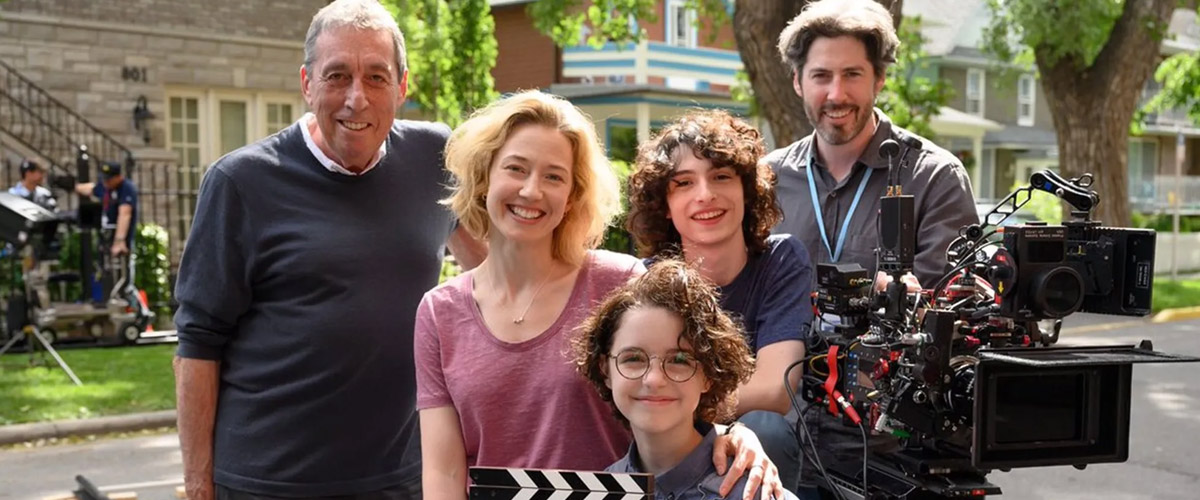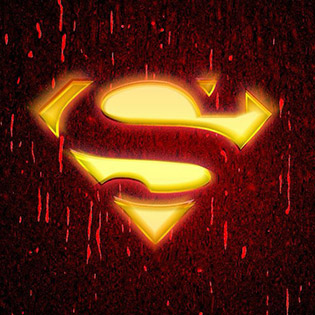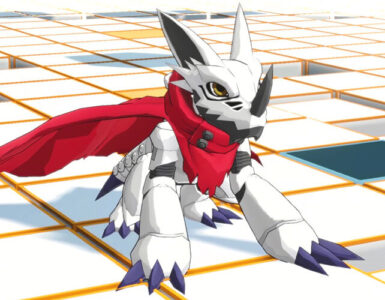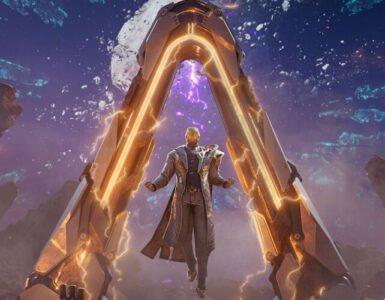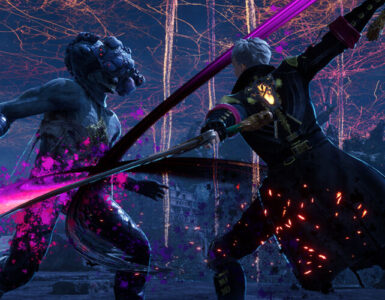Hollywood loves to revisit old material, be it a reboot or revival of a popular franchise, but more often than not, the end results aren’t quite as amazing as the originals.
Case in point? The new Star Wars Sequel Trilogy pales in comparison to the Original Trilogy and who can forget the abysmal Indiana Jones and the Kingdom of the Crystal Skull, or the appalling Independence Day: Resurgence?
These movies bank on the love that audiences have for the original, but rather than embrace the rich heritage and legacy of the originals, they ignore the spirit and passion, and rely on the marquee name only.

But then there is noted independent filmmaker Jason Reitman, who made his name crafting small but successful films including Thank You for Smoking (2005), Juno (2007), Up in the Air (2009), and Young Adult (2011).
If the name sounds familiar, he’s the son of Ivan Reitman, the director behind some well known films in the 80s and 90s, including Twins (1988), Kindergarten Cop (1990), and Dave (1993), as well as the iconic 80s horror comedy, Ghostbusters (1984), and its 1989 sequel, Ghostbusters II.
In fact, young Jason was seven when he joined his father on set of the original film, watching as young actors Dan Aykroyd (Ray Stanz), Bill Murray (Peter Venkman), Harold Ramis (Egon Spengler), and Ernie Hudson (Winston Zeddemore) form the titular ghost busting team, along with co-stars Sigourney Weaver (Dana Barrett), Rick Moranis (Louis Tully) and Annie Potts (Janine Melnitz).
Which makes him the perfect person to helm a sequel that would appeal to the masses, make fans happy, and please the studios. More importantly, only he knows how much the franchise means to his father and the stars of the original duology, and only he could have rallied them to support this sequel, since Murray has been vocal about not wanting to revisit the franchise.
After several delays due to the pandemic, the 44-year-old director is ready for audiences to rekindle their love for Ghostbusters, with Ghostbusters: Afterlife.
Question (Q): Could you talk about the genesis of this new film?
Jason Reitman (JR): Eight to ten years ago a character popped into my head. It was a 12-year-old girl who finds a proton pack in a barn. And like many ideas I’ve had, I didn’t know why it just showed up. I didn’t know who she was yet. And eventually I started to think of this story. The story of a kid who finds a proton pack and, in that moment, discovers who she is, what her legacy is, why she’s unique. And I began writing a movie I never thought I would write. You know, I came into my career as kind of a Sundance filmmaker, as a film festival filmmaker, and I was prepared for that to be my career. And eventually I couldn’t look away from this idea any longer. I’d fallen in love with this family and needed to make a movie about them.
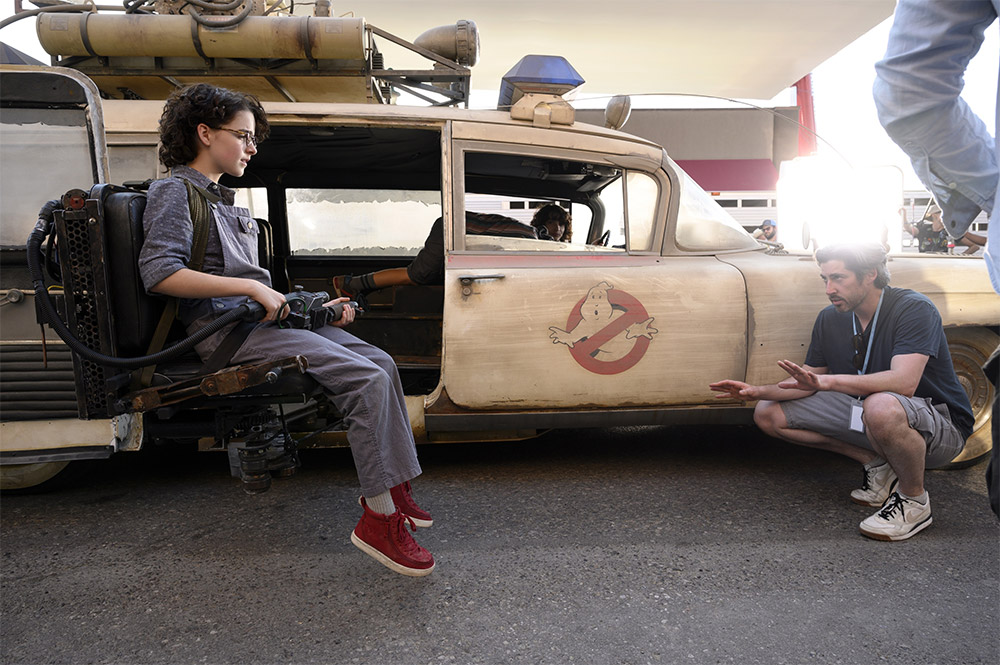
Q: And the way was through your father’s movie.
JR: Yes. Well, I consider myself the first Ghostbusters fan. I was seven years old and before anyone knew what a terror dog was or what a proton pack was, I was actually on set. I remember being on set the day that the marshmallow man exploded and melted, and they had a stunt man there getting pelted with shaving cream and I walked home with this little piece of Stay Puft Marshmallow Man that sat on my shelf all the way through high school.
Q: Talk about the theme of this movie and how it’s a little bit different.
JR: I wanted to make a movie that was as much for my father as it was for my daughter. I wanted to tell a generational story about a single mom with two kids, two kids who don’t know their identity and find out that they are actually quite special. Ghostbusters has always been a film about outsiders – outsiders who find heroic moments through the act of ghostbusting. It’s a franchise that has kind of been punching up from the very beginning.
We all know what it feels like to go into our grandparents’ basement or attic looking for something special, something that makes us feel unique. And that’s where this movie begins. And that’s what I want the audience to feel. I think we all have this sense of Ghostbusters as though perhaps it’s hiding underneath a blanket in our grandparents’ attic. And that’s what I want the experience of this film to be.
I want the audience to feel while they’re watching Ghostbusters like they’re being handed back Ecto-1, the proton packs, the music, the props, the characters. Piece by piece, from start to finish of the movie, you’re watching this mystery and we are kind of handing you back all your favorite elements of this franchise.

Q: Why make this movie now?
JR: I had this idea for the character of Phoebe, a 12-year-old genius scientist, a maker, someone who makes things with her hands. Ghostbusters has always been a franchise about people who make things with their hands. And I loved the idea of this young girl who finds a proton pack and gets it to work again – gets to pick it up and actually feel the proton blast out for the first time. And when Harold Ramis passed, I suddenly knew who this girl was. And she was Egon Spengler’s granddaughter. That was the story I wanted to tell.
Q: And this was timely now because of this girl scientist?
JR: Like any father, I want to see great heroes for my daughter. And I’m in the rare position where I get to tell stories where I get to actually help create one of those characters. In Phoebe, I wanted the audience to meet a young girl who is a genius, who feels like an outsider, who is looking for friends, in the moment that she discovers she’s just like her grandfather. She is a scientist. She is someone who can make things, who wants to fix things. She is the kid who wants to break open the toaster and see how it works, but instead of a toaster, she gets a proton pack.
Q: What does the family dynamic mean to the movie?
JR: There have been three Ghostbusters movies so far. And they’ve had a similar construction. Four people go in business together in a ghostbusting business. That is not what this movie is about. This is a movie about a family. It’s about a single mom, and two kids, who discover who they actually are.
I’ve always been attracted to family stories. Juno, Young Adult, at the end of the day, these are all movies about families. And my way into the Ghostbusters timeline was going to a family story. We meet a mom. We meet two kids, a young girl, a teenage boy. Our model for Trevor was always the older brother from E.T. What happens if you’re a teenage kid and all you want to do is drive a car and you find out you have Ecto-1.
It’s been 35 years since we’ve last seen the Ghostbusters and I think all of us kind of wonder what has happened to them. And on this farm, we get to find out what happened one of these characters.
This Ghostbusters story is a mystery. What is Ecto-1 doing in this barn? Why is this proton pack in the American West? And that’s what we’re solving over the course of this story. This young girl, she finds a proton pack. She actually gets it to work again. She walks outside. She turns it on. It fires off into a row of corn. Popcorn flies in the air. And of course we are thrust into a Ghostbusters story in a completely new location. We’re not in Manhattan anymore. It’s not a vertical story. It’s a horizontal story.
Our characters are thrust into a Ghostbusters story in a completely new location and we’re left wondering, okay, what was Egon doing out here? Why did he set up this farm? Why did he bring the car out here? Why did he bring the gun out here? What happened to the original Ghostbusters? These are all questions I want the audience to be wondering about as they watch this film. And just as our young characters are discovering who they were and what happened and what brought them here, we as an audience, with this relationship with the original Ghostbusters, are wondering the same thing.
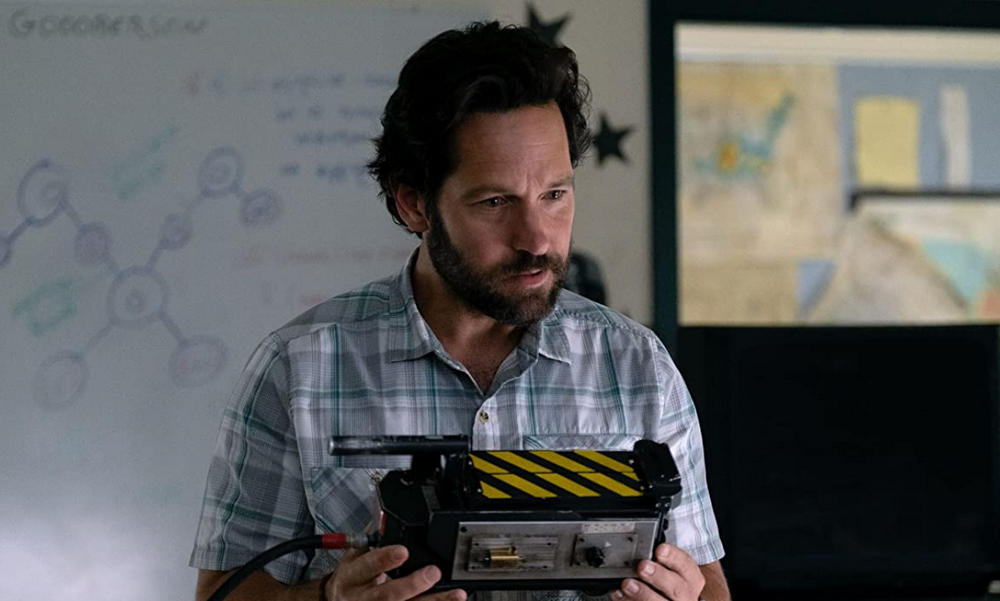
In a weird way, the Ghostbusters have not been just only a part of my family, they’ve been kind of a part of everybody’s family. This is a movie that I know I grew up watching a lot of times, but I know everyone grew up watching it a lot of times. And like any movie that you fall in love with, you wonder what happened to these characters. So I want this film to feel like those moments that anyone walks into their grandparents house and tries to figure out, wait a second, who am I? Where did I come from? What makes my family special? What makes me special?
That’s the question that these characters are trying to answer and they are answered by ghostbusting. Our characters are thrown into a Ghostbusters plotline with the ultimate stakes, left to finish their grandfather’s legacy, left to finish something that Egon was attempting to do, but couldn’t finish himself.
So the big question is, how do you make a Ghostbusters movie? Something that I’ve probably been thinking about my entire life since I was on the set as a kid. And what we wanted was to make a completely nostalgic experience, something that put you right back into what it felt like to watch the original movie in 1984. So we’re using all kinds of techniques that were developed back in ’84. This should feel like your grandmother’s recipe. The second you taste it, it should feel like, yes, that’s a Ghostbusters movie.
So what I’ve spent a lot of time doing recently is really trying to figure out how they made the film back then. How did they use stop motion? How did they use optical effects? How did they get the proton beam and the Terror Dogs to look exactly as they did? And these actually put me into a lot of conversations with my own father about how did you actually make this film? And we sit down and we talk about technique.
Q: Are you talking to any of the former makers of the movie?
JR: If you think of a lot of creatures you see on screen these days, they’re creatures that were invented in a computer, which is exciting and it’s great and offers all kinds of new technology. But you think about the Ghostbusters characters, what is the continuity of the taxonomy, right? What puts Slimer in the same world as Stay Puft Marshmallow Man, the same world as the library ghost, same world as the Terror Dog? You know, one character is opaque. One is transparent. One is humanoid. One is floating. But there is something about Ghostbusters, everything that you think is going to terrify you makes you laugh. Everything that you think is going to make you laugh scares the crap out of you. And that is what we wanted to emulate.
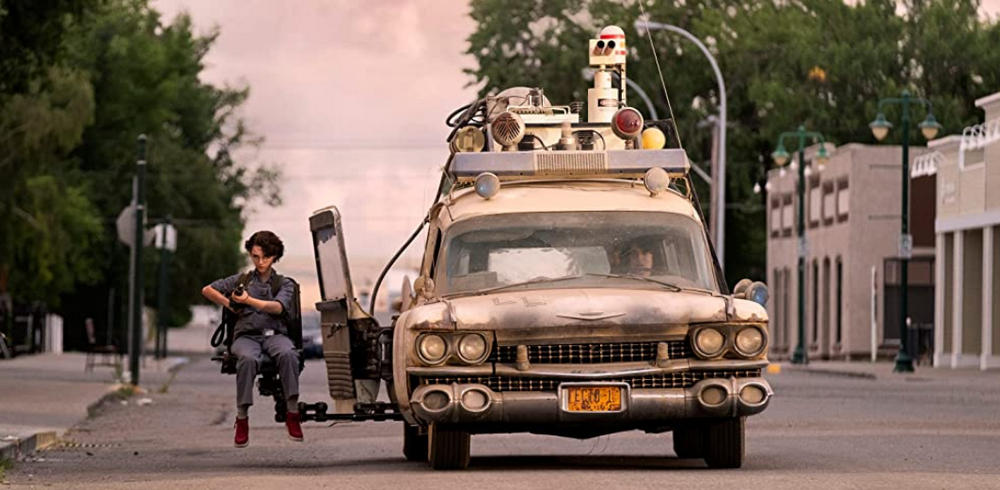
So went back to the techniques that they used to make the original film. Conceive of characters out of clay. There’s something physical about the clay, when an artist molds a ghost out of clay for the first time instead of in a computer, where they can actually turn and look at it and see how the light hits it, and it’s emotional, it’s different, it’s physical, it’s real. It doesn’t have a perfect asymmetrical being, but it’s kind of odd and goofy. You know, when I think about Ghostbusters, I think about things like MAD magazine and Crack magazine and Heavy Metal magazine, and all of these different sources of artistic comedy that were around in the late 70s and early 80s that spawned Ghostbusters as an idea.
Q: Did you get in there with the clay?
JR: I should not be trusted with anything that has to do with pen on paper or clay or anything. That is not my gift. But fortunately, we’re working with all kinds of brilliant artists who have a similar affection for this franchise, who have a similar affection for Ghostbusters. You know, people who grew up on it and who are approaching it with that same point of view of writing a love letter to this movie that they grew up with.
Q: You’ve written this film. Talk about that process and how you started.
JR: When Gil Kenan and I sat down to start writing this movie, it felt like we were writing fan fiction. It’s like how do you write about these characters and these ideas that we grew up with? You know, the first time you write Ecto-1 it feels sacred and it almost feels sacrilegious. Like, I don’t deserve to write these words down. We’re carrying someone else’s child. And it feels like that. When I’ve conceived of my own story idea, I’m probably rougher around it.
You’re more casual with your own children than when you’re taking care of somebody else’s. So, I’ve tried to treat these characters and this franchise with care. Because I feel the weight of that legacy.
Q: Did you feel like you had to ask permission?
JR: The first time I told my father the story of this movie, I sat down actually in this room with Gil Kenan, and we pitched the movie from start to finish and he cried.
Q: Did you find yourself turning to him for advice?
JR: Oh, certainly. Every once in a while, a movie is a piece of magic. It’s almost inexplicable what makes it work so good. And you think about those great films of the 1980s. Back to the Future. Raiders of the Lost Ark. Ghostbusters. There is something in their DNA that makes them bond all of us. And from an archaeological perspective, it’s very complicated to figure out what it is. It’s not about one shot or one character or one piece of dialogue. It’s not because he said, he slimed me. It’s not because of the way the costumes were.

But there’s this kind of inexplicable magic that connects it all. So a lot of my conversations with my father were about exactly that. Me trying to understand what it felt like for him to create Ghostbusters back in the early 80s. What did it feel like to make it? To direct those actors? To cut those scenes? You know, when I hear stories about the original Ghostbusters, it happened so quick. It wasn’t one of these long gestating ideas that took place over decades. It’s a movie that got made in a year start to finish. And what felt like a wild ride apparently.
And now I find myself looking to my father to try to understand, how did you start the car? What did it feel like? How do I capture that same energy?
Q: It’s interesting that you’ve gone back to the tools that he had.
JR: Yes. Making a Ghostbusters film now actually requires a lot of restraint. Because you want the experience to feel similar. You want to recognize that DNA, the moment the movie starts playing. It’s never been my goal to throw out the last film and start with something completely new. I wanted something from the moment the movie starts, the moment you hear Elmer Bernstein’s music. The first time you see any one of the props or the car, it feels a hundred percent like a Ghostbusters movie.
Q: Have you changed any of the music at all or stuck with that score?
JR: Oh, absolutely. I mean, Elmer Bernstein, who wrote the original score, is an absolute genius who comes from this kind of mixed history of classical music and jazz and you can feel it in that score. And the way he used the Ondes Martenot, he used this musical instrument that we associate with ghosts, but he used it to write beautiful, romantic themes like Dana’s theme. So our goal is to use all that original music. You know, what would Star Wars be without John Williams?
My argument is John Williams is the most important filmmaker of the last century. You take his music out of all those films and he is absolutely MVP.
Q: How did you find this glorious cast?
JR: Carrie Coon is brilliant in anything she’s ever done. I think the first time I saw Carrie was probably in Gone Girl and I just thought, okay, who is this young woman who just stole the entire film? And then I watched her on Fargo Season 3 and I thought how do I get the opportunity to work with her? I’ve always been interested in capturing real family dynamics. I’m not interested in the fake stuff. And real families argue and real families make fun of each other. And there’s something kind of close knit. You know you’re with the people that you really love when you can tease them and make fun of them. And really get under their ribs and, you know, hit the places that hurt.
So I needed a mom who could be just dead honest with her kids and Carrie Coon is that kind of wonderful Midwestern actress who has honesty in every single word she says and doesn’t pull any punches. And I knew she was going to be the matriarch of this family.

Q: How did you find the younger cast?
JR: Well, anyone who has watched anything in pop culture recently knows who Finn Wolfhard is. My daughter was thrilled when we cast Finn Wolfhard. Whether you’re a fan of IT or Stranger Things, he’s just one of these young guys who captures the look of a generation in the way he talks, the way he looks. He is the kind of the teenager that we all wish we were.
Finn has an incredible vulnerability for being a teenage boy. And that is a very unusual characteristic. He also happens to be very handsome and very funny. And he’s an amazing Trevor.
Q: And Mckenna?
JR: For being so young, Mckenna Grace has already built a pretty big career for herself and whether you recognize her from Captain Marvel or the Haunting of Hill House, my personal favorite is her as young Tonya Harding which she was just perfect in. But we needed a young woman who is genuinely brilliant. And that’s who Mckenna is. She’s probably read more books than I have. And she’s exceptionally smart. And very thoughtful. And very funny. And she’s perfect for Phoebe. A young woman who is misunderstood, who is on the spectrum, and finds herself in ghostbusting.
Q: How has the legacy of all of the cast informed you in making this movie?
JR: There was probably nothing scarier than sending Dan Aykroyd the script of this film. I mean, here’s the guy who actually came up with the original idea of ghostbusting. And I was curious what his notes would be like and whether or not they would feel as though they were in the same voice as the originator. And boy did they. It’s like receiving notes from Ray Stantz. All that kind of odd and humorous ghost speak and Lovecraftian dialogue is so true to who he is and to get emails from Ray Stantz is completely inspiring.
Q: How did the legacy of Harold Ramis come into play and how did you feel you were honoring it?
JR: When I was a kid, I got to know Violet Ramis, Harold’s daughter, on set. And we reconnected maybe a year or two ago. And she was one of the first people I sent the script to. And that was a big moment for me because I feel like I carry my father’s legacy in the way that she carries hers. And it was a lovely moment when she read the script and we talked about it for the first time, and we talked about her father. When I think about the originators, I really think about Dan Aykroyd and Harold Ramis and my father sitting in a room together writing, conceiving this film.
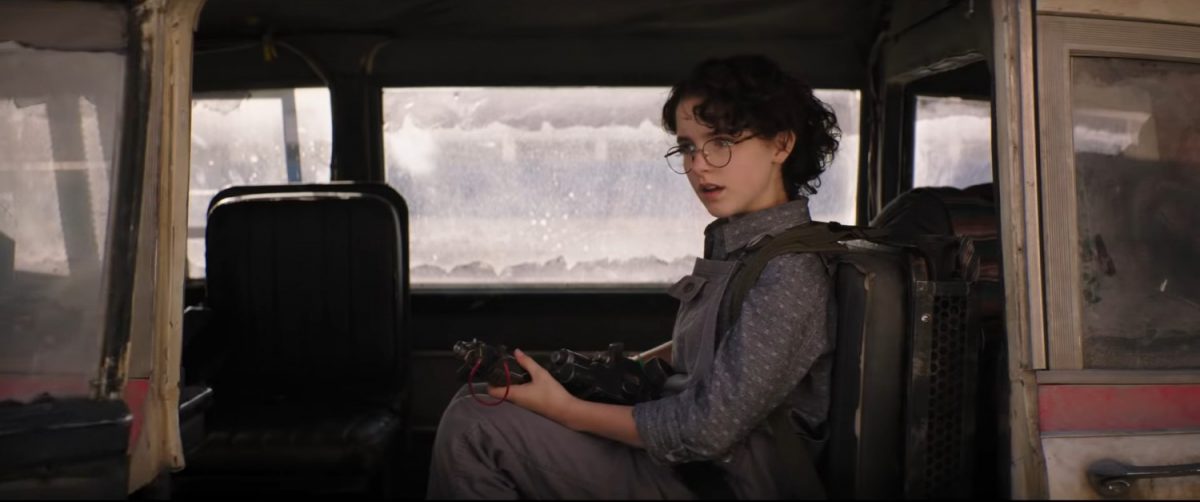
And Dan Aykroyd is an explosion of ideas. You can kind of feel all the science fiction and fantasy he grew up reading in everything he says and the way that he talks about actual ghosts. And you can feel my father’s macro storytelling ability in really everything he’s ever done. My father is the greatest storyteller I’ve ever met. My father can look at a script and go, you have to do this, this, and this. And in a chiropractic way, he will make your movie sing.
Harold is the heart of those characters. And that is what you feel when you watch the original Ghostbusters. That genuine sense of friendship. That love that they have for each other from the beginning to the end of the script when they walk on top of the building is Harold Ramis. And he has been a master from his time at Second City all through his career at making sense of unusual characters and making us feel connected to them, seeing ourselves in them.
And when Gil and I sat down to write this movie, we knew we had access to all these original ideas that came from ’84. We knew we had access to Dan Aykroyd. But the person that we felt as though we needed to channel was Harold Ramis. And that was the question we probably asked ourselves most while writing is: What Would Harold Do?
The original Ghostbusters was about a group of guys who invent all this equipment, for ghostbusting. Our movie centers around a family who finds this equipment and who are in the midst of an unfinished adventure that they need to complete. Along the way they’re going to meet characters that we’ve seen before and they’re going to meet all kinds of new characters that I’m really excited to introduce to the audience – characters who are doing things and acting in a way that the audience has never seen before. Invented in the same tone and language as the original characters but using today’s technology to do kinds of things that they couldn’t do back in 1984.
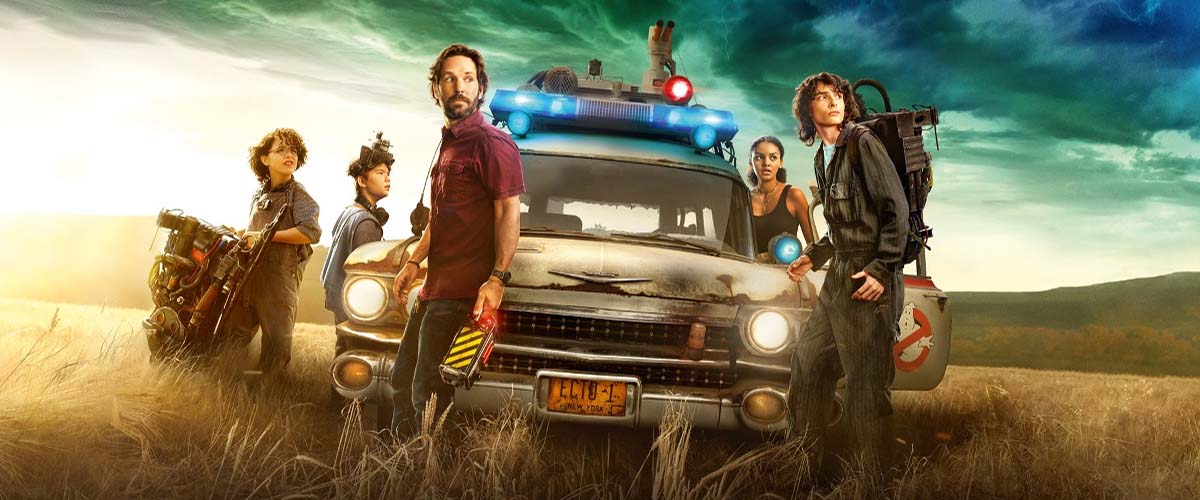
Q: What is a Ghostbusters ghost, by your definition?
JR: What is a Ghostbusters ghost? That’s the question that Gil Kenan and I were trying to figure out as we were writing this movie. What makes them funny? What makes them scary? What makes them totally unique from all the ghosts you’ve ever seen in any other movie and how do we add that? What is it about slime that makes it so wonderful? Horrifying and yet we kind of want to be slimed ourselves.
If you think about ghostbusting historically, it’s always been about four people standing next to each other ghostbusting. We wanted to put ghostbusting in motion. We wanted ghostbusting hanging out the side of the car, your hair blowing in the wind, in complete danger, trying to lasso a ghost as you’re trapping it from this little RTV. In this Ghostbusters movie, you’re getting reacquainted with all this equipment that you know, but there’s a secret new thing that every piece of equipment does.
Q: What do you think sets this film apart from the others?
JR: This is a Ghostbusters movie that is looking backwards and looking forwards at the same time. We want to reconnect with the nostalgia, with all the reasons that we love this brand. But simultaneously we want to show ghostbusting like you’ve never seen it before. I want to do things with the proton beam that they couldn’t do back in 1984, really get into the weight and the physicality of it. You know, when you’re fighting a ghost and it’s pulling against you on that proton beam and it wants to go right and you’re trying to pull it left, what does that look like? What does that feel like? I want to see the proton pack shaking in their hands. I want to see Ecto-1, the car shaking underneath and falling apart underneath them.
Ghostbusters: Afterlife opens in theatres on 18 November 2021.

